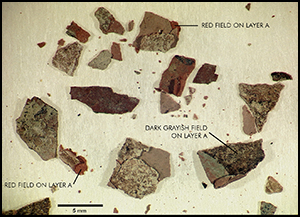Crossref Citations
This article has been cited by the following publications. This list is generated based on data provided by
Crossref.
Buti, D.
Domenici, D.
Grazia, C.
Ostapkowicz, J.
Watts, S.
Romani, A.
Presciutti, F.
Brunetti, B. G.
Sgamellotti, A.
and
Miliani, C.
2018.
Further Insight into Mesoamerican Paint Technology: Unveiling the Colour Palette of the Pre‐Columbian Codex Fejérváry‐Mayer by Means of Non‐invasive Analysis.
Archaeometry,
Vol. 60,
Issue. 4,
p.
797.
Lentz, David L.
Hamilton, Trinity L.
Dunning, Nicholas P.
Jones, John G.
Reese-Taylor, Kathryn
Anaya Hernández, Armando
Walker, Debra S.
Tepe, Eric J.
Carr, Christopher
Brewer, Jeff L.
Ruhl, Thomas
Meyers, Stephanie A.
Vazquez, Mariana
Golden, Alex
and
Weiss, Alison A.
2022.
Paleoecological Studies at the Ancient Maya Center of Yaxnohcah Using Analyses of Pollen, Environmental DNA, and Plant Macroremains.
Frontiers in Ecology and Evolution,
Vol. 10,
Issue. ,
Lentz, David L.
Hamilton, Trinity L.
Meyers, Stephanie A.
Dunning, Nicholas P.
Reese-Taylor, Kathryn
Hernández, Armando Anaya
Walker, Debra S.
Tepe, Eric J.
Esquivel, Atasta Flores
Weiss, Alison A.
and
Hart, John P.
2024.
Psychoactive and other ceremonial plants from a 2,000-year-old Maya ritual deposit at Yaxnohcah, Mexico.
PLOS ONE,
Vol. 19,
Issue. 4,
p.
e0301497.
Stadnik, Marie
2024.
Ancient Stories in Clay: Greek, Moche, and Maya Painted Ceramics within one book. (Review on Saunders, D., O’Neil, M. E. (eds.), 2024, Picture Worlds: Storytelling on Greek, Moche, and Maya Pottery. Los Angeles: J. Paul Getty Museum.).
Text and Image: Essential Problems in Art History,
p.
113.
